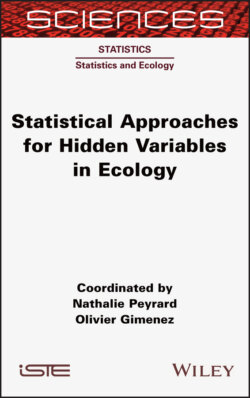Читать книгу Statistical Approaches for Hidden Variables in Ecology - Nathalie Peyrard - Страница 24
1.2.1.3. Filtering and smoothing a trajectory
ОглавлениеAs we have seen, the reconstruction of a trajectory is reliant on the determination of a smoothing distribution, that is, for all 0 ≤ t ≤ n, the distribution of Zt|Y0:n. Note that the inference of the real position at a time t takes account of all observations. As this distribution is Gaussian in the context of the model [1.1], this corresponds to calculating [Zt|Y0:n] and [Zt|Y0:n] using Kalman recursions.
The name Kalman is more often encountered in the context of Kalman filtering, rather than Kalman smoothing. In these contexts, the Kalman filter is used to determine the filter distribution, that is, the distribution of Zt|Y0:t. It is, thus, the distribution of the position at time t on the basis of the observations up to time t.
Intuitively, smoothing gives a better estimation than filtering, as the future can be taken into account when estimating a position at time t. Using filtering, the tth position is corrected using positions observed up until time t, while in the case of smoothing, all of the available information is taken into account. Figure 1.2, taken from Lopez et al. (2015), illustrates the advantages of smoothing. A precise, frequent recording of the movement of an elephant seal, obtained using GPS (the reference curve), is shown alongside a reconstruction of the same real trajectory obtained using Argos data, filtering and smoothing.
